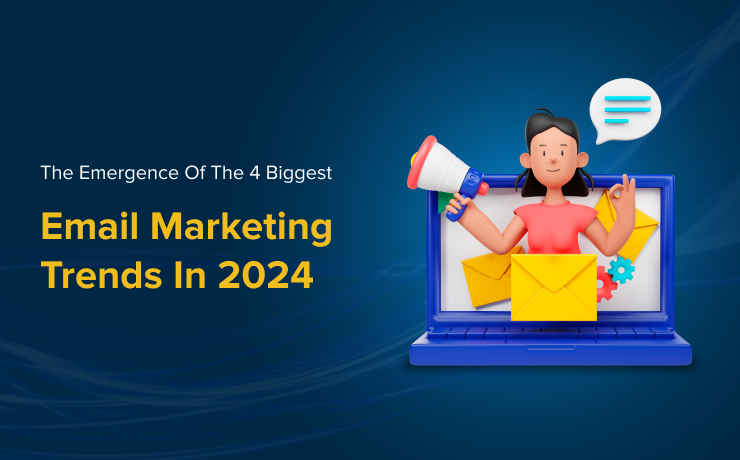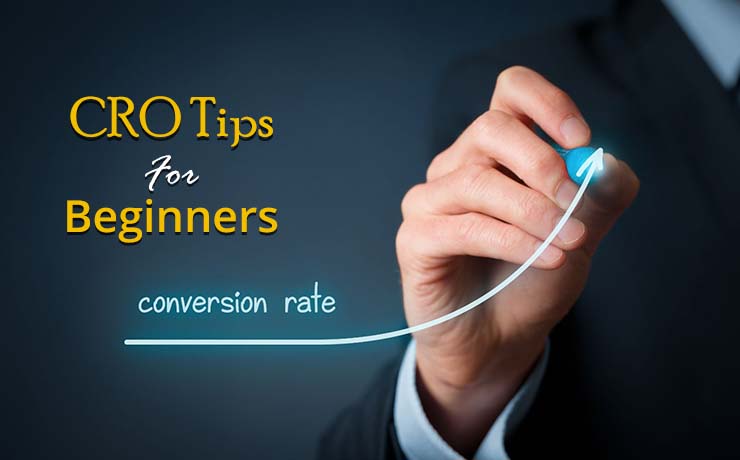5 Steps You Need to Take to Meet Google & Yahoo’s New Sender Requirements

Ashley Ismailovski
Director of Email Marketing

As you may already be aware, Google & Yahoo are implementing new sender requirements on February 1st. These changes will be most impactful to brands who send more than 5,000 daily emails to Gmail or Yahoo addresses, including all transactional and marketing emails sent to customers & subscribers. Failing to adhere to these new requirements can mean your email campaigns will land in your subscribers’ spam folders.
It can be easy to feel overwhelmed by the needed changes — but don’t worry! SmartSites has made it easy to understand what actions your brand needs to take.
Here are 5 Steps You Need to Take to Meet Google & Yahoo’s New Sender Requirements:
Step 1: Use A Branded ‘Sent From’ Address
Sometimes called a Friendly “From” Address, your Sent From email address should always be aligned with your brand’s domain. To pass this check, you will need to utilize an email address that includes your site’s domain name (i.e. @yourdomain.com). This is an important step towards email compliance and will be needed to facilitate the rest of the steps included here.
Sent From email addresses can be configured at both a campaign level and an account level. Visit your account settings in your Email Service Provider (ESP) to ensure you meet these requirements. After, check your existing campaigns, flows, and templates to ensure an ineligible email address is not used in any special cases. It’s okay to use a different email address from one message to the other, but they all must use the same domain as your site.
For all senders: You will no longer be able to use a @gmail.com, googlemail.com, or @yahoo.com email address to facilitate marketing or transactional emails for your brands. This applies to all senders, not just bulk senders with 5,000+ daily emails. Using emails hosted under these domains will be flagged as spam due to the perceived impersonation of Google & Yahoo as an email sender.
Step 2: Enable One-Click Unsubscribe Links
If you do one thing to follow basic email marketing compliance, it should be to include an unsubscribe link in any email message you send to your customers or subscribers. If you don’t already include an unsubscribe link in all messages, stop what you’re doing and go update this right now!
For the new sender requirements, this is two-part: 1) You must have an unsubscribe link in the body of your email message, and 2) Your marketing emails must include a one-step unsubscribe method. Most brands already do include an unsubscribe link in all email campaigns, flows, and templates, but it’s worth a quick check to make sure your brand does so to avoid steep legal penalties.
For the one-step unsubscribe option, you’re likely in luck! Most popular ESPs, including Klaviyo, Omnisend, and MailChimp, already implement a list-unsubscribe header on all emails built on their platform to satisfy this requirement. But, not all ESPs offer one-click unsubscribe links by default. We encourage you to check with your provider to confirm if any action is needed on your end. We’ve linked some popular ESPs below for easy reference.
Step 3: Maintain Low Spam Complaint Rate
This is another point that your brand is probably (read: hopefully) already taking steps to address as part of your current email marketing strategy. It’s always been a best practice to keep spam complaint rates low, but all senders will now be required to keep them under 0.10%.
If you are unsure what your current spam complaint rate is, you can visit your Analytics tab in your ESP to find out or use Google’s Postmaster Tools to monitor your spam complaint rates manually.
For brands struggling with spam complaint rates, we recommend the following best practices to keep your email messages out of the spam box:
- Only send emails to users who have provided either implicit or explicit consent to receive marketing messages from your brand
- Enable double opt-in upon sign-up for new subscribers
- Avoid spammy subject lines that include typos, too many emojis, or excessive capitalization and punctuation
- Segment your list to deliver only the most relevant content to each subscriber
- Make your unsubscribe link easy to find. And, where possible, enable Global Unsubscribes to all emails from your brand
Step 4: Set Up A Dedicated Sending Domain
By default, your brand will be part of a shared sending domain if you are using an ESP to facilitate your email marketing messages. This means that you are utilizing the platform’s sending domain to send messages to your subscribers. A shared sending domain can offer a variety of benefits to new and scaling brands who are looking to establish their sender reputation. However, larger brands may find that they outgrow this shared domain and want to have better or more control over their sender reputation.
Any company is eligible to create a dedicated sending domain, but they will now be required by Google & Yahoo for bulk senders. Sometimes referred to as a branded sending domain, a dedicated sending domain allows you to send emails that appear to be coming from your brand by improving the branding in the “from” address in your campaigns and automated messages. Steps for setting up a dedicated sending domain will vary per platform and will require updates to your site’s DNS settings.
If you are not comfortable configuring your DNS setting yourself, we recommend reaching out to your website development team – or an agency, like SmartSites – to help facilitate these changes. We encourage you to check with your provider to confirm what is needed on your end to set up a dedicated sending domain. We’ve linked some popular ESPs below for easy reference.
Step 5: Authenticate Your Domain
This step is the one that will vary the most depending on which ESP your brand uses to facilitate your email marketing campaigns. Google & Yahoo are now requiring bulk senders to authenticate their domain via (DKIM/SPF) and add a DMARC policy.
Sender Policy Framework (SPF) and DomainKeys Identified Mail (DKIM) are types of authentication that can be applied to your domain. These requirements are most easily met by authenticating your domain via your ESP. We recommend that all accounts authenticate their domain, but this will now be required by Google & Yahoo for bulk senders. For this, you will need to follow the steps provided in your platform to verify and authenticate your domain with that provider. Check the provided Helpful Links below to find out what steps are needed to authenticate your domain with your ESP.
DMARC stands for Domain-based Message Authentication, Reporting, and Conformance. DMARC is configured in your DNS settings, which are entirely separate from your ESP. This is a standard that builds on your SPF or DKIM authentication and ensures that emails are genuinely coming from your domain. DMARC helps to protect your brand from email spoofing techniques, such as phishing, business email compromise (BEC), and other email-based attacks. We recommend following MXToolbox’s DMARC guide to add this to your DNS.
Not Sure If Your Brand Is Impacted?
SmartSites is offering a free one-time audit of your account to determine if you are likely to be impacted by Google & Yahoo’s new sender requirements! After reviewing your account, we will provide you with a comprehensive checklist of recommended actions to take in order to meet these new compliance standards.
Get Your Free ESP Compliance Audit
Need Help?
Should you require assistance with any of the recommended updates, SmartSites is here to help! One of our dedicated Email Marketing Specialists will work with your brand to ensure your email campaigns are delivered successfully to your subscribers.
Helpful Links: Guides by Platform
Klaviyo: Google & Yahoo Sender Requirements for Klaviyo
Omnisend: Google & Yahoo Sender Requirements for Omnisend
Brevo: Google & Yahoo Sender Requirements for Brevo
MailChimp: Google & Yahoo Sender Requirements for MailChimp
HubSpot: Google & Yahoo Sender Requirements for HubSpot
Constant Contact: Google & Yahoo Sender Requirements for Constant Contact
Privy: Google & Yahoo Sender Requirements for Privy
New Sender Requirement FAQs
A: The changes outlined in Google and Yahoo’s new sender requirements have long been recommended as best practices by inbox providers and marketers alike. By changing these recommendations to required changes instead of friendly suggestions, Google & Yahoo are taking a firm step towards blocking spam email messages on their platforms, and enforcing proper authentication to help facilitate email marketing success for brands.
A: If you sent 5,000 emails to Google and Yahoo subscribers on any given day, it’s possible that you will be marked as a bulk sender by these inbox providers. Remember, this total includes transactional emails sent from your brand, including order confirmations, shipping notifications, and more. Better to be safe than sorry.
A: After the changes go into effect on February 1st, if you noticed any one of the following signs, it’s possible that your brand could be negatively impacted by Google & Yahoo’s new sender requirements:
- Low open or click rate
- High spam complaint rate
- Low email delivery rate
- High soft or hard bounce rate
- Decrease in conversions from email marketing
A: There are a variety of free tools available online to check if your DNS settings have been correctly configured to meet Google & Yahoo’s new sender requirements. We recommend checking MxToolbox for DKIM, SPF, and DMARC. If you are unsure, SmartSites offers a free ESP compliance audit! Contact us to learn more.
A: It’s important to note that the new sender requirements are defined by email recipients who use Google & Yahoo as their inbox provider, not the provider that hosts your brand’s email accounts where your campaigns are sent from. If your email list contains subscribers who signed up with a @gmail or @yahoo email address, you will need to comply with the new sender requirements.
 Free
Consultation
Free
Consultation Free
Google Ads Audit
Free
Google Ads Audit







